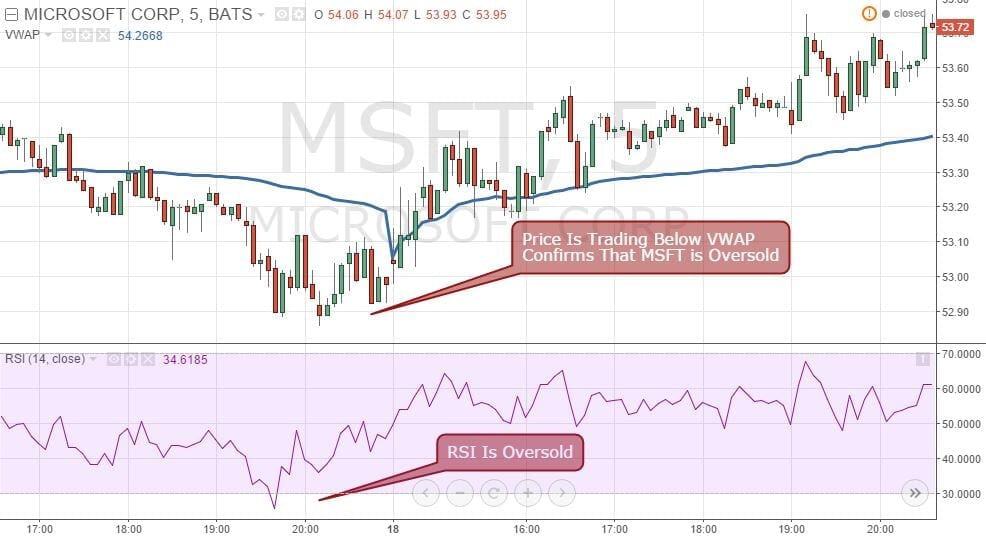How Income Statement Accounts Are Revalued


Revaluation changes the depreciable amount of an asset so subsequent depreciation charges are affected. If the asset decreases in value, the revaluation reserve is credited on the balance sheet to decrease the carrying value of the asset, and the expense is debited to increase total revaluation expense. If the asset increases in value, the offsetting reserve expense would be decreased through credit, and the revaluation reserve on the balance sheet would be increased through a debit. Thus, IAS 16 clearly states that the transfer from revaluation reserve for nullifying the effect of additional depreciation should not be made through profit or loss. Thus, IAS 16 categorically says that such transfers should not affect net profit attributable to equity shareholders.
The separate account titled the ‘Revaluation Account’ is opened to record the adjustments related to the revaluation of assets and liabilities. An increase in the value of the assets or a decrease in the liability is recorded on the credit side of the Revaluation Account, and any decrease in the asset or increase in the liability is debited. The unrecorded assets and liabilities are also taken into consideration. An unrecorded asset is recorded on the credit side, and an unrecorded liability, if any, is debited. Then the profit or loss, as the case may be, is transferred to the partner’s capital/current account in their old profit sharing ratio. Both sides of the Revaluation Account are compared to determine the profit or loss.
Such as – if you revalue a building, you must revalue all land and building in that class of asset. Point to be noted that regulation must be carried out with sufficient regularity so that the carrying amount does not differ materially from that which would be determined using fair value at the reporting date. Revaluation reserve is the upward and downward adjustment of an asset’s value, depending on the material changes in the asset’s value.
To that extent profit is inflated every year and the revaluation reserve is converted into so called „earned profit“. As the entire revaluation reserve is converted into „earned profit“, a company can issue bonus shares. These adjustments are posted through journal entries to the underlying account with the offset posted to an unrealized gain or loss account. All debit adjustments are offset against the unrealized gain account and all credit adjustments are offset against the unrealized loss account. If the same account is specified in the Unrealized Gain Account and Unrealized Loss Account fields, the net of the adjustments is derived and posted.
The equipment is found to have increased in value – it is now worth £12,000. £2,000 is recorded on the income statement, credited to the revaluation surplus account. Revaluations affect both the currency being examined and the valuation of assets held by foreign companies in that particular currency. A revaluation is a calculated upward adjustment to a country’s official exchange rate relative to a chosen baseline, such as wage rates, the price of gold, or a foreign currency. Read moreThe primary objective of this reserve is to ensure the accounting books reflect the true and fair value of the asset. This reserve is not part of the other reserves, and thus, it is not distributable to the shareholders.
The Guidance Note explains that the company should charge full depreciation to the Profit and Loss and thereafter it can take transfer from revaluation reserve to adjust additional depreciation. Thus, the Guidance Note vaguely explains that such transfer should not affect profit attributable to equity shareholders. However, companies use revaluation reserve to maintain bottom line by adjusting it directly in depreciation and thereby affecting net profit attributable to equity shareholders.
Generally, evaluations are carried out for an asset whenever there is a difference between the asset’s current market value and its value on the company’s balance sheet. However, the company will have to give the details required by Sec. 211. If the asset has been sold at a loss, first the loss is charged to revaluation reserve and the balance to Profit & Loss Account. If revaluation reserve is not squared up, the balance is transferred to general reserve. If the asset has been sold at a profit, the profit is credited to Profit and Loss Account and the revaluation reserve balance is transferred to General Reserve Account. O Credit Profit and Loss to the extent of previous decrease and if still the carrying amount of the asset is lower than its revalued amount, credit the balance to revaluation surplus.
Foreign Currency Revaluation: Definition, Process, and Examples
Before the Chinese government revalued its currency in 2005, it was pegged to the U.S. dollar. It is a nominal account that is prepared in the event of admission, retirement, or death of a partner and changes in profit sharing ratio. Alternatively, it can be said that it is prepared at the time of reconstitution of a partnership. The amount that a company transfers from reserve to General Reserve are the revaluation surplus. So, we can say that a revaluation surplus comes into existence only after a company discards or sells an asset. So it can be used only upon the actual realization of the money on the sale of assets.
Asset Impairment is commonly found in Balance Sheet items such as goodwill, long-term assets, inventory, and accounts receivable. Other revaluation losses, for example the effect of a general fall in market values on a portfolio of properties, should be partly recognised in the statement of total recognised gains and losses. However, if the loss is such that the carrying amount of the asset falls below depreciated historical cost, then any further losses need to be recognised in the profit and loss account. The revaluation reserve does not result from an arm’s length transaction; it represents an expert’s perception of value. If the aforementioned currency revaluation occurred, any assets held by a U.S. company in the foreign economy need to be revalued. If the asset, held in foreign currency, was previously valued at $100,000 based on the old exchange rate, the revaluation would require its value to be changed to $200,000.
That being said, most users typically end up manually cleaning up accounting entries related to foreign currencies. However, companies that handle thousands, or even millions of foreign currency transactions monthly often face a variety of challenges with foreign currency revaluation. To illustrate the concept of foreign currency revaluation, here’s a simple example.
- When the asset is sold on 30 November 20X6, a profit on sale of $55,000 would be recognised.
- Thus, in substance, the entire depreciation will first be added and then deducted.
- Thus, the Exposure Draft has endorsed Method 2, explained above, for transferring the Revaluation Reserve to Depreciation Account.
- Revaluation is used to adjust the book value of a fixed asset to its current market value.
- The U.S. had a fixed exchange rate until 1973 when President Richard Nixon removed the United States from thegold standard and introduced a floating rate system.
Unlike realisation account is prepared only once, and that is when the firm discontinues its operations. Whenever the firm is reconstituted, it is generally preferred to check whether the assets appear at their current market price in the books of the firm. If it is discovered that the assets are undervalued or overvalued, then these are subject to revaluation. Likewise, liabilities are reassessed, if found overstated or understated, so as to ensure that these are presented at their correct values in the firm’s books. Many times, unrecorded assets or liabilities are discovered, which is also entered in the books.
Revaluation and derecognition
This means that in most accounting systems, the translated rate is calculated when the entry is created and is never “retranslated” again. When the revaluation process is scheduled to run automatically, the accounting period increments on each subsequent run. Define separate revaluation definitions for each class of accounts, using a different rate type for each class.
Crypto The ideal tool for tracking your crypto asset management transactions in a scalable way. Venture Capital SoftLedger’s venture capital accounting software is feature-rich to support all your consolidation needs. Revaluation account comprises of only those assets and liabilities, whose values are revised.
This reserve is not available for the distribution of dividends to shareholders. And the Current Market Price method are the most commonly used methods. The frequency of revaluation depends on the changes in the asset’s fair value. Suppose the fair value of the asset changes materially from the carried value.
Include accounts for tracking gains and losses, currency conversion rates, and the number of entered currencies to revalue. The Smithsonian Agreement was a deal reached in 1971 among the G10 countries to adjust the system of fixed international currency exchange rates. The primary purpose of creating capital reserves is to collect funds for future business expansion or any other future need.
Foreign currency revaluation is the period-end process of re-valuing a financial account or transaction from a foreign currency into a company’s reporting currency using a foreign exchange rate. In contrast, certain profits may transfer to the Capital reserve at the discretion of the management, like profit on the sale of fixed assets or investment. In contrast, revaluation reserve is created out of an increase in the value of the assets compared to their recorded value in the books. Impairment Of AssetImpaired Assets are assets on the balance sheet whose carrying value on the books exceeds the market value , and the loss is recognized on the company’s income statement.

The purpose of foreign currency revaluation is to help companies remain compliant with accounting standards and keep an accurate record of how much they owe/are owed while factoring in foreign currency exchange rates. In some situations, foreign currency revaluation is also necessary to comply with tax laws. It can be prepared at various events during the life of the firm.It can be prepared only once, i.e. when the firm is dissolved.
Revaluation Loss Treatment
If the company doesn’t perform the revaluation when the books close, it is at risk of reporting inaccurate financial data. To illustrate the concept as simply as possible, pretend you’re an American citizen visiting Canada. It’s January 15th, and you went to the store with your friend to buy something but forgot your wallet. Your friend agrees to purchase a product for you, costing 10 Canadian dollars .
He currently researches and teaches economic sociology and the social studies of finance at the Hebrew University in Jerusalem. Partners agreed that the revised values are to be recorded in the books. Prepare Revaluation Account, pass necessary Journal Entries and prepare a revised Balance sheet. The carrying value of the property at revaluation meaning in accounting 31 December 20X6 would have been $2.74m ($2.8m – 2 x $30,000). Taxes to finance government-bond revaluation would have battered a society already facing high taxes for other post-war burdens. If this revaluation of the duality of architectural knowledge is the overidding challenge of the day, arq’s arrival is timely and necessary.
Key Differences Between Revaluation and Realisation Account
However, the reserve balance was $1 million ($2 million less $1 million). Thus, we need to show the remaining $1 million as an impairment expense. Companies may use reserve lines instead of or in association with write-downs or impairments. Write-downs and impairments are typically a one-time cost fee due to an unforeseen reduction in the value of a long-term asset. It automatically adjusts the balance for any ledger accounts set to be revalued.
O Debit Revaluation Reserve and if still the carrying amount of the asset is higher than its revalued amount then charge to Profit and Loss Account. The Exposure Draft on AS 10 , „Tangible Fixed Assets“ besides appraisal by competent valuers also suggests income approach and depreciated replacement cost approach. In our next blog post, we provide a few additional pointers to help your currency accounting run smoothly. And let us know if you’re looking for BI Consulting or a Microsoft SSRS Consultant.
Understanding Currency Accounting: Revaluation and Translation
The loss on the asset’s sale will be recognized in the income statement only after adjusting it against the revaluation reserve; profit, if any, is recognized in the income statement. For Example 2 , if the revaluation loss was caused by a consumption of economic benefits, then the whole loss would be recognised in the profit and loss account. If the revaluation loss was caused by general factors, then it would be necessary to compute the depreciated historical cost of the property. This is the carrying value of the property at 31 December 20X6 if the first revaluation on 1 January 20X5 had not been carried out and would be $1.86m ($2m – 7 x $20,000). The actual carrying value of the property at 31 December 20X6 was $2.74m . Therefore, of the revaluation loss of $1.24m , $880,000 ($2.74m – $1.86m) is charged to the statement of total recognised gains and losses, and the balance of $360,000 ($1.24m – $880,000) charged to the profit and loss account.